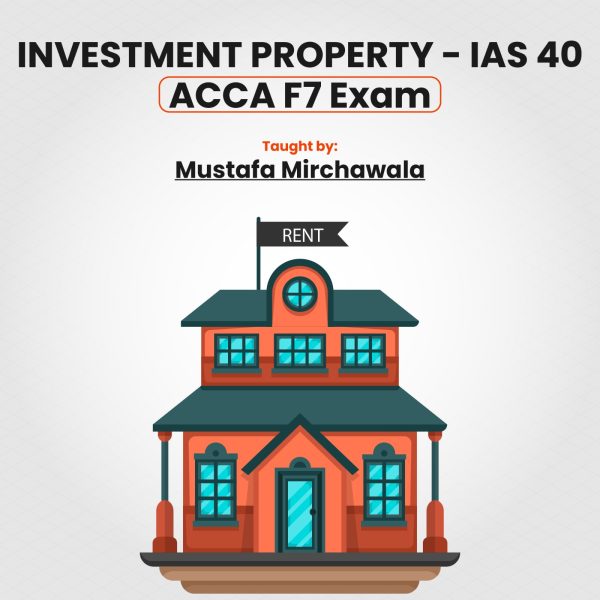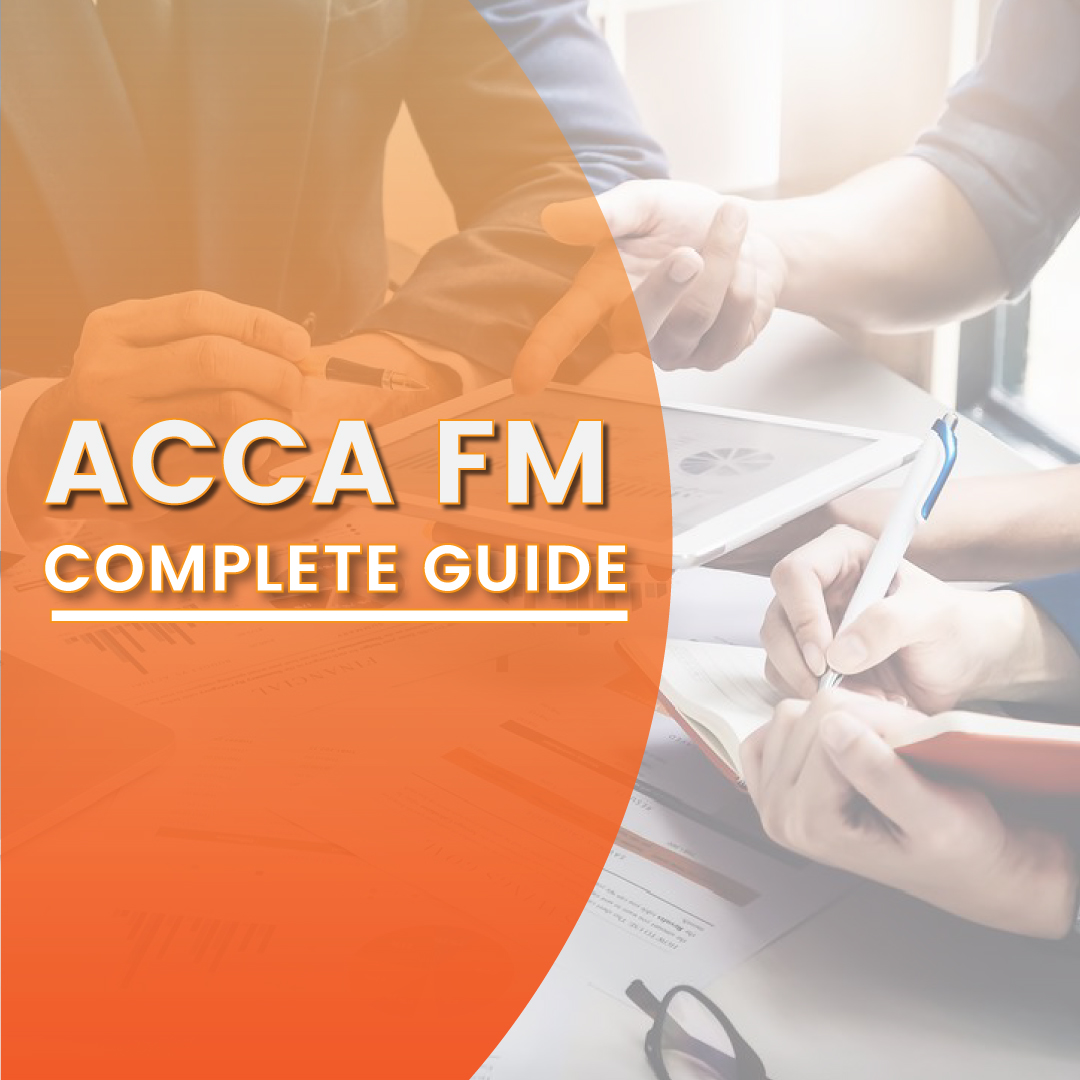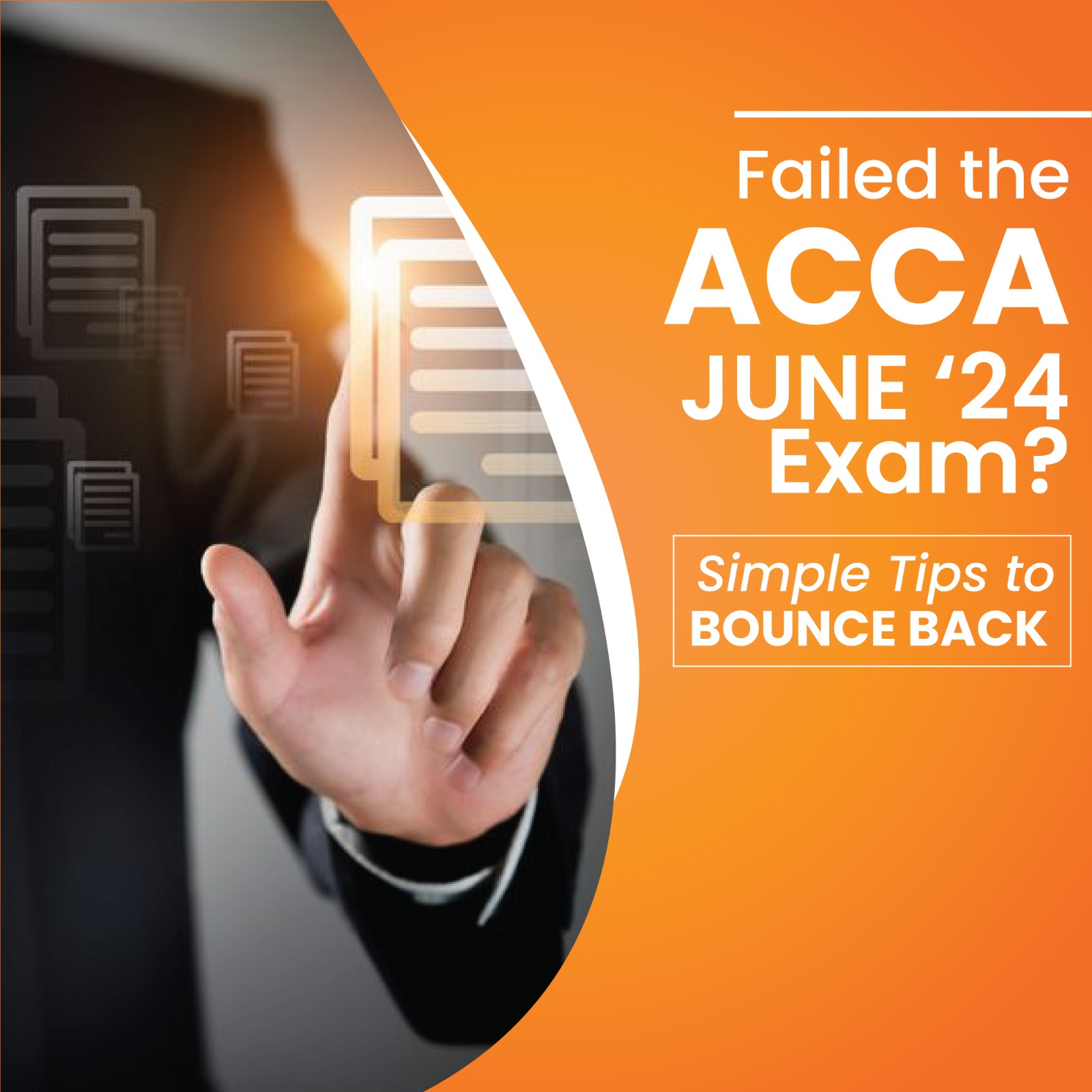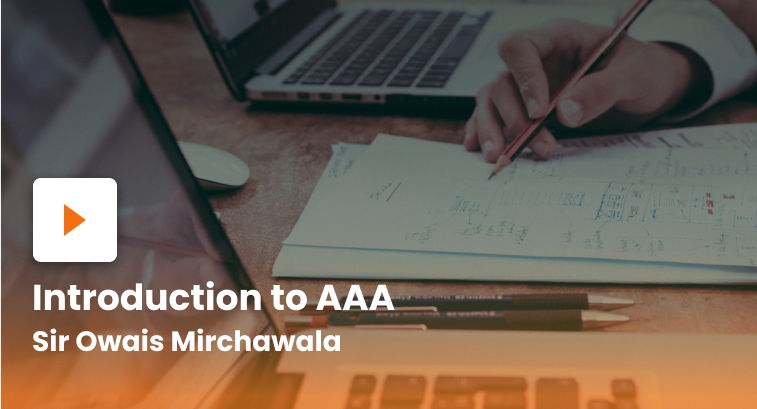IAS 40 Investment Property for ACCA Financial Reporting (F7)
Businesses are always on the lookout for additional revenue streams to supplement their primary source of income. A common form of generating extra income is lending through renting out or investing in property. Be it part of your own premises that you rent out or separate property that you own, the fact that it is the business’s possession makes it eligible for accounting in its books. This is where IAS 40 is needed.

Put in layman’s words, IAS 40 Investment Property provides guidance on how to handle income generated from property investments (of course, there is much more to it, we will just get to that). Although this income may not contribute to the primary revenue stream, it is still an important part of the business’s financial portfolio, hence the need to report it. Compliance with IFRS regulations is crucial for businesses of all sizes, and following the IAS 40 standard ensures that they meet these regulations. By doing so, businesses can establish themselves as trustworthy and reliable entities, which can help attract potential investors and clients.
IAS 40 Definition
As defined by the standard makers, an Investment Property is any land or a building or a part of it that is held by the owner. To classify under IAS 40, this property needs to possess certain characteristics:
- The objective of holding the property must be to earn rentals and/or benefit from capital appreciation.
- It should not be owner-occupied.
- The property should not be used in normal business activity such as the production or supply of goods and services, or administration.
- It should not be held for sale in the ordinary course of business.
This encapsulates a range of properties that are primarily used for investment purposes, rather than for day-to-day business operations (as I said – side income!). Further examples of investment properties also include:
- Land that is held for undetermined future use.
- Property being constructed or developed with the intention of being used as an Investment Property.
The definition of IAS 40 also rules out specific assets that are treated under other standards and hence outside the scope of IAS 40, for example:
- Property being used in the business (IAS 16 Property, Plant, and Equipment) – this refers to any property being used in the ordinary course of business such as the production or supply of goods or for administrative purposes. It also extends to refer to property that is being constructed or developed for future use in the business as well as property that is used by the business employees or that is owner-occupied and is awaiting disposal.
- Property held for sale in the ordinary course of business (IAS 2 Inventories)
- Property that is being constructed or developed on behalf of third parties (IFRS 15 Revenue from Contracts with Customers)
IAS 40 Accounting treatment
Once a property qualifies as an Investment Property and there is a need for it to be recorded in the books of accounts under the rulings of IAS 40, a myriad of questions arise about its accounting treatment; How will it be recorded? How will its disposal be treated? How will its change in use be accounted for? and many more. Follow along to get the answers to these questions.
IAS 40- Recognition criteria
An Investment Property can only be recognized or recorded in the books if:
- There is a probability that in the future economic benefits will flow into the entity
- The cost can be reliably measured.
Once it fulfills these conditions, Investment Property is initially recorded at cost. Cost includes the purchase price of the property along with any additional, directly attributable costs, for example, legal fees. However, if the property is self-constructed then its cost will comprise all the relevant expenditures up to the date of completion. Any subsequent expenditure thereon can only be capitalized if it is probable that it will increase the future economic inflow.
Following initial recognition, the entity now has a choice between cost and fair value models for subsequent measurement. It is important to note that whichever method is chosen will apply to all investment properties. For example, if the fair value model is chosen, every investment property the entity holds will be accountable under the fair value model. Also, once a model has been selected, it has to be used consistently. Changing the model is only permitted if it results in a more appropriate and true presentation. However, it is unlikely, and therefore pointed specifically within the standard, that a change from the fair value model to the cost model will be justifiable.
IAS 40-Cost model
Similar to the treatment in IAS 16 and IAS 38, the cost model of IAS 40 requires the property to be recorded at its cost less accumulated depreciation and any impairment loss. The fair value of the investment property will still be calculated, but under this model, it will only be used for disclosure purposes.
IAS 40-Fair value model
As per IFRS 13, fair value represents the amount at which a property can be sold between market participants, in an orderly transaction, at the measurement date. Typically, properties have an active market where buying and selling take place regularly, making it easier to determine their fair value accurately.
The fair value model of IAS 40 necessitates the revaluation of the property at the end of each year, and any changes in fair value are reflected in the profit and loss statement. This is different from the treatment by IAS 16 and IAS 38, where changes in fair value are recorded in Other Comprehensive Income. As far as depreciation is concerned, under this model there is none.
Change in use of property
An entity can transfer its property between IAS 40 Investment Property, IAS 16 Property, Plant, and Equipment, and IAS 2 Inventories. However, as per the guidelines of the standard board, this can only happen if there is a change in the use of the property. This could be in the following ways:
- If the property is now occupied by the owner (IAS 40 to IAS 16).
- If the land that once had an undeterminable use is now being developed for sale in the ordinary course of business (IAS 40 to IAS 2).
- If the property is no longer occupied by the owner (IAS 16 to IAS 40).
Once there is a justifiable change in the use of property, it will then be transferred from the existing standard to the new one.
- Shift from IAS 16 to IAS 40 cost model – there is no big change (merely the standard name is changed). The property is transferred from Property, Plant, and Equipment to Investment Property at the current carrying value and continues to be depreciated as before.
- Shift from IAS 16 to IAS 40 fair value model – the property will first be revalued under IAS 16, with any revaluation surplus being within equity. It will then be transferred to IAS 40 at its fair value and now no depreciation will be charged, instead, it will be remeasured for its current fair value each year.
- Shift from IAS 40 cost model to IAS 16 – Again, since it is the cost model, the property will simply transfer from Investment Property to Property, Plant, and Equipment at the current carrying value and it will continue to depreciate.
- Shift from IAS 40 fair value model to IAS 16 – the property will be remeasured at its current fair value and be treated under the rulings of IAS 40 (i.e., gain or loss will be recorded in the statement of profit or loss). It will then be transferred to Property, Plant, and Equipment at this value and now begin to depreciate over its expected useful life.
Steve Collings FCCA sheds light on elements in the accounting treatment of investment property under FRS 102 that have been foxing preparers of reports-ACCA Global
IAS 40 Disposal
If an investment property is disposed off, which means that no future economic benefits are expected to flow from it, then it has to be derecognized. This quite obviously means that it will be removed from the entity’s books, the rulings for which are similar to that of IAS 16.
Firstly, the property will be removed from Non-Current Assets and the net proceeds received will be debited to Current Assets. Secondly, the gain or loss on disposal has to be recorded. This is calculated as the difference between the net disposal proceeds received and the property’s carrying amount. The figure calculated will be recorded in the Statement of Profit or Loss.
Common issues regarding IAS 40
Dual-purpose property
Consider this scenario: a business owns a building that it uses for its operations, but also rents out a portion of it. Since this is a dual-purpose property, both IAS 16 and IAS 40 accounting standards come into play. The challenge here lies in determining which standard should be used to account for the building.
If an entity owns a property that serves a dual purpose – for both business use and rental income or capital appreciation – the property should be split and accounted for separately under IAS 16 and IAS 40, according to the portion allocated to each.
However, this is only possible if each portion can be sold or leased separately on a finance lease. If this is not possible, then the “majority wins” principle applies. This means that the standard for the primary use of the building will prevail. For example, if only one floor is dedicated to rental income and the rest is used for business purposes, then IAS 16 will be used.
Ancillary services
It is undeniable that renting out a space requires little or no provision of any services. This means that as a landlord, you are not obligated to provide any additional services to support the activity. On the other hand, when it comes to PPE, it is evident that due to the production, supply, and administration activities being conducted, ancillary services are crucial. This is a significant distinction between Investment Property and PPE whereby, it is stated in IAS 40 that for a property to be classified under this standard, the ancillary services portion must be insignificant.
Group accounts
Consolidated and individual books differ in many ways. Among these, one cause is IAS 40. If there is a lending activity occurring among the group participants, it is treated differently in both books.
For example, if the parent company has rented out its space to its subsidiary company, in the individual accounts, this will be treated according to IAS 40. However, from the group’s perspective, it is still considered as an owner-occupied property, thus, IAS 16 will be applied.
Frequently Asked Questions FAQs
Q1. What is the difference between IAS 16 and IAS 40?
All non-current assets that are owner-occupied and used in the normal course of business are recorded under IAS 16, whereas, assets that are solely held for rental income or capital appreciation are treated under IAS 40.
Moreover, the fair value model of IAS 40 requires gain or loss to be recorded in the Statement of Profit or Loss and the revaluation method of IAS 16 requires revaluation gains or losses to be recorded in Other Comprehensive Income.
Q2. Which standard is used if a property is being constructed?
- If a property is being constructed for future use in the ordinary course of business – IAS 16
- If the property is being constructed for a third party – IFRS 15
- If the property is being constructed for future earnings through rentals or capital appreciation – IAS 40
- If no future use has yet been decided of the property being constructed – IAS 40
Q3. What is the disclosure of IAS 40?
There are various disclosure requirements pertaining to IAS 40 including the model being used, the basis of fair value calculation, movements in Investment Properties during the year, etc.
Closure Note
Most students find IAS 40 to be a relatively simple and straightforward standard, with no complicated guidelines to contend with. It is examinable at both F7 and SBR levels, and bears many similarities to IAS 16 (which can sometimes lead to confusion).
By reading this article, we hope that you have gained a solid understanding of the concepts covered by IAS 40. We are committed to continuing our role as a beacon for students.
-Written By Sarosh Yameen Student of Mirchawala’s Hub Of Accountancy












[…] October 12, 2023 […]
[…] October 12, 2023 […]
[…] is Bad Debts ? & what happens when a Read more October 12, […]
Comments are closed.